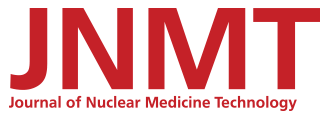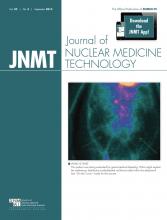Cybil Nielsen, MBA, CNMT, FSNMMI-TS
Hello from the NMTCB! We are proud to be the certification organization of choice for nuclear medicine and molecular imaging. As such, we continue to offer certification examinations that meet the needs of the ever-changing and evolving role of the nuclear medicine technologist.
The most exciting news is the introduction of the NMTCB CT examination. Responding to your needs and the results of our 2012%20certificant%20survey, a decision was made to provide a CT examination and credential to nuclear medicine technologists. The response has been overwhelmingly positive since we made this announcement late last year. The first examination will be on November 15. The application deadline is October 1. We are busy working to meet the demand for the NMTCB(CT) credential, and we hope to have the examination available on-demand soon.
Eligibility%20requirements to sit for the NMTCB CT examination include 500 clinical hours in SPECT/CT, PET/CT, or CT, as well as 35 didactic (continuing education) hours in CT. You must also be a certified or registered nuclear medicine technologist.
With the addition of the CT examination, the NMTCB now offers 5 examinations for certification: entry level (CNMT), positron emission tomography (PET), nuclear cardiology technologist (NCT), nuclear medicine advanced associate (NMAA), and computed tomography (NMTCB CT).
In 2013, we had 958 people sit for the entry-level exam. Of those, 845 individuals (88.2%) passed, with 133 candidates receiving a “Pass with Distinction” score and 57 candidates achieving a “Pass with Highest Distinction” score. We currently have almost 24,000 active certificants. For our specialty exams, we have 608 NCT certificants, 820 PET certificants, and 12 NMAA certificants.
The NMTCB continues to demonstrate dedication to the highest standards of the nuclear medicine profession and did so again recently by adopting a new eligibility requirement stipulating that only graduates from programmatically accredited institutions will be qualified to sit for the entry-level examination. This change goes into effect January 1, 2016. In addition to validating their knowledge of the field through examination, we wanted to be sure the clinical experience of graduates would meet or exceed nationally accepted accreditation standards set by the professional community for entry into the field. Programmatic accreditation procedures give us that assurance. Employers have the same assurance when an applicant comes to them holding the CNMT credential.
We currently recognize the following programmatic accreditors: JRCNMT (in the United States), CAMRT (in Canada), Australian government–recognized programs, and the Air Education and Training Command (military programs in the United States). We are continuing to investigate other programs outside the United States to see if they meet the standards.
And finally, just last year, the NMTCB completed a comprehensive%20salary%20survey. The NMTCB continues to monitor the profession of nuclear medicine technology and respond to their certification needs. As chair of the NMTCB, I am pleased to see our progress. As our field continues to evolve and our responsibilities as technologists change, the NMTCB is here to meet your certification needs.








